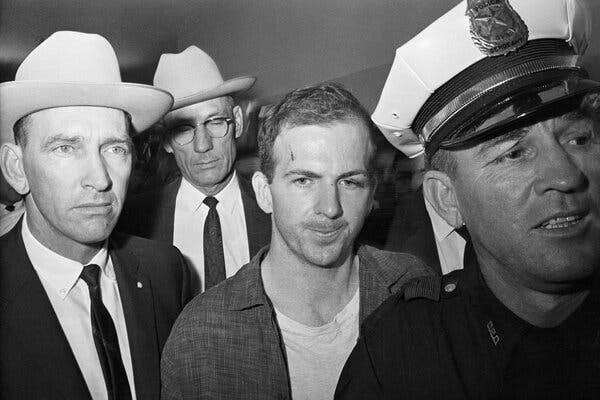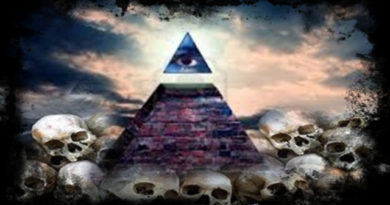John F. Kennedy Assassination: US Releases Trove of Related Documents
Researchers said they were just beginning to comb through the 13,173 documents, hoping they might shed further light on the government’s actions before and after Nov. 22, 1963.
The federal government on Thursday released a fresh trove of documents related to the assassination of President John F. Kennedy, a turning point in American history and the subject of persistent conspiracy theories, despite the official government conclusion that Lee Harvey Oswald, acting alone, shot him to death.
Historians and researchers said they were just beginning to comb through the 13,173 documents containing newly released information, hoping they might shed further light on one of the most closely scrutinized murders in recent history and on the government’s actions before and after it.
The documents included records relating to Oswald’s trip to Mexico City several weeks before Kennedy’s assassination in 1963; Oswald’s trip to Finland in 1959, the year he defected to the Soviet Union; and images of his Cuban visa application. Some of the documents — including one about Operation Mongoose, a covert government campaign to rid Cuba of Fidel Castro — included redactions.
Many of the documents had been released previously but now have fewer redactions or none at all, researchers said. Many were scrambling to find out what new information had been revealed.
Mark S. Zaid, a Washington lawyer who has handled Freedom of Information Act cases related to the Kennedy assassination and has pushed for more documents to be released, said, “There’s not going to be any smoking guns. There’s not going to be anything that pushes the needle one way or the other.”
“For someone who has just an interest in the Kennedy assassination, I dare say they will not find anything that will make them gasp,” Mr. Zaid said as he began poring through the records. “The value in these documents is going to be for the die-hard researchers and academics who will now spend months digesting each and every page.”
The National Archives said that more than 97 percent of the records in its collection related to the Kennedy assassination — approximately five million pages — were now available to the public.

President Biden decided last year to delay the release of the latest trove until Dec. 15, 2022, saying the national archivist had reported that the pandemic was having a “significant impact” on agencies that needed to be consulted on redactions.
A 1992 law required the government to make public the last of the Kennedy assassination documents by Oct. 26, 2017, unless the president opted to withhold them for national security reasons. The Trump administration released a trove of Kennedy assassination records in the fall of 2017.
How Times reporters cover politics. We rely on our journalists to be independent observers. So while Times staff members may vote, they are not allowed to endorse or campaign for candidates or political causes. This includes participating in marches or rallies in support of a movement or giving money to, or raising money for, any political candidate or election cause.
But after intense lobbying by the C.I.A. and the F.B.I., President Donald J. Trump agreed to hold back a batch pending an additional review to ensure that nothing released would damage national security. Mr. Trump told the agencies that any redactions should be exceedingly rare.
According to the C.I.A., 95 percent of its documents in the collection have been released and no documents have been fully redacted or completely withheld. The C.I.A. said its collection of records includes about 87,000 documents, approximately 84,000 of which have been released in full.
In a memo on Thursday, Mr. Biden said the “profound national tragedy of President Kennedy’s assassination continues to resonate in American history and in the memories of so many Americans who were alive on that terrible day; meanwhile, the need to protect records concerning the assassination has weakened with the passage of time.”
“It is therefore critical to ensure that the United States government maximizes transparency by disclosing all information in records concerning the assassination, except when the strongest possible reasons counsel otherwise,” Mr. Biden said.
The documents made public on Thursday included many that have been previously released with redactions, said Gerald Posner, an investigative journalist and author of “Case Closed: Lee Harvey Oswald and the Assassination of JFK.” Mr. Posner said the public has often assumed that most of the documents withheld by the government have never been seen at all.
Mr. Posner cautioned that anyone believing that the latest batch might change the “fundamental conclusion” reached by the Warren Commission in 1964 was on a “fool’s errand.” That commission, led by Chief Justice Earl Warren, concluded that Oswald was acting alone when he fired three shots from the Texas School Book Depository on Nov. 22, 1963, killing Kennedy and wounding Gov. John B. Connally Jr. of Texas as they rode in an open-topped limousine through Dealey Plaza in Dallas.
Still, Mr. Posner said, “the very fact that we are talking 59 years later about what documents the C.I.A. and other agencies are resisting to release in their entirety absolutely feeds the public’s idea that there is something wrong in the Kennedy assassination.”
Surveys over the years have consistently revealed that most Americans believe others were involved in the murder. A House select committee said in a 1979 report that there was evidence suggesting the possibility of a conspiracy but did not identify who those conspirators might have been.
Many of the documents released on Thursday detailed C.I.A. covert operations in Latin America in the years before and after the assassination.
For example, a memorandum dated December 1963, a month after the assassination, discussed efforts to disrupt a meeting of the Unified Labor Federation for Latin America — described as an “assemblage of left-wing labor leaders, socialists, and communists” — in Brazil.
One document outlined C.I.A. efforts to frame Cuba for smuggling Soviet weapons into various Latin American countries, as well as planned operations to bomb power stations, oil refineries and other industrial targets in Cuba.
Julian E. Barnes contributed reporting.
This article has been archived for your research. The original version from The New York Times can be found here.


